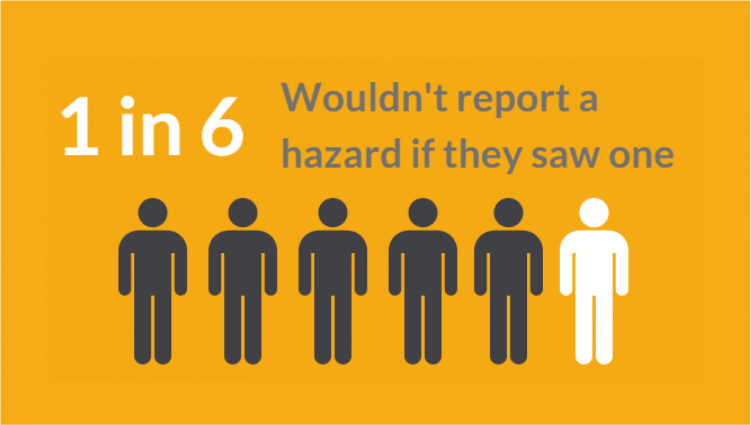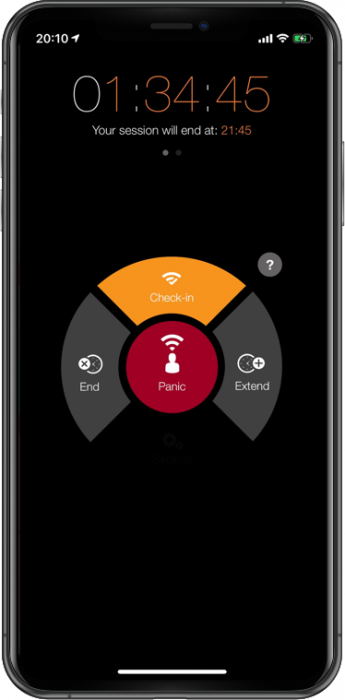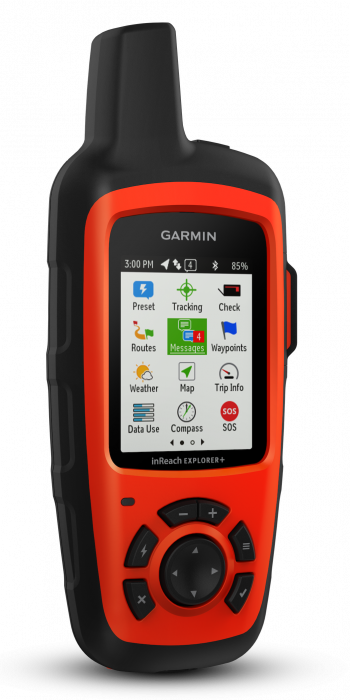Workplace Hazards
1 in 6 would not report identified workplace hazards despite 25% admitting that they or someone they worked with had been harmed at work.
Find out how to overcome the barriers of hazard reporting and create a positive safety culture.
Hazards aren’t always being reported in the workplace, according to a survey by Accident Advice Helpline. One in six said they would not report identified workplace hazards despite 25% admitting that they or someone they worked with had been harmed at work.
When asked why, the respondents gave the following answers;
- 29% said they didn’t have the time
- 24% felt the hazard didn’t affect them
- 23% said it wasn’t their responsibility
- 23% didn’t know who to report a hazard to
- 13.2% worried about getting in trouble
- 7.5% were told not to report an issue
Common workplace hazards
The hazards that had been commonly identified in the workplace correlate with not only the biggest cause of injury in the workplace, but also fatalities:
- 58.7% had seen spillages in the workplace
- 56.6% witnessed a lack of safety around machinery
- 50.4% saw trailing wires
- 43.5% noticed uneven flooring
- 37.8% saw the wrong equipment being used for tasks
- 36.3% identified someone not wearing the correct health and safety equipment
- 29% noticed others working at height without following health and safety requirements
Injury and fatality statistics
Slips, trips and falls are the biggest cause of accidents in the workplace. In fact, there were 20,294 reported incidents last year alone. While these incidents should be easily avoidable, three slip, trip and fall hazards were identified by the majority of survey respondents.
Falls from height also remains the main cause of fatalities in the workplace. Falls from height were responsible for 37 workplace deaths in the UK last year. Yet a shocking 29% of participants had seen someone working at height without following health and safety requirements.
Machinery was also the cause of at least 9 deaths and 2,656 injuries.
Why is reporting so important?
Reporting allows the business to identify and reduce risk in the workplace. This is incredibly important to employee safety as demonstrated by the statistics. Accidents will not only cause harm to the employees involved, but the entire business could be subject to prosecution, fines, a hit to reputation and even imprisonment.
Surprisingly, 84% of respondents thought that reporting could make hazards less likely in their workplace and yet many still were not reporting these dangers.
Overcoming the barriers of hazard reporting
Incident reporting should be made a part of employees work day. However, this has to be encouraged by the employer and incorporated into your health and safety policy.
If someone is injured or killed at work, their colleagues are likely to be affected in some way. Creating a safety culture in the workplace will help your employees to value safety look out for each other.
While many may feel that a hazard is not going to affect them, accidents can happen to even the most safety conscious worker. This is particularly true as many of the hazards identified, such as slips, trips and falls, could affect anyone regardless of job function.
Again, creating a positive safety culture should help your employees to want to take responsibility for the safety of themselves and their colleagues.
However, incident reporting should also be made a requirement for all employees. Reporting should be incorporated into any policies and safety training to reinforce the responsibility each employee holds.
Who an incident should be reported to should also be included in your policy and any safety talks or training. You could consider appointing a health and safety representative within each team to whom incidents should be reported to.
Hazard reporting should never be about discipline but rather correction and prevention. Employees should not be punished for reporting a hazard and avoid assigning blame.
You could consider setting up an online, anonymous reporting portal for your employees to prevent any worries.
Risk assessment is a legal requirement for all workplaces. As your employees know the risk they face each day best, encouraging reporting will help you in this process.
Could you staff signal for help in an emergency? Our easy to use smartphone app lets you know where your staff are and if they are safe. Contact us for more information and pricing.
Hazards of Lone Working
In the last few years, the number of people classified as lone workers has been steadily rising with the number of monitored lone workers in Europe and North America expected to reach 2.2 million in 2023 according to Berg Insight.
According to the HSE, ”Lone workers face the same hazards at work as anyone else, but there is a greater risk of these hazards causing harm as they may not have anyone to help or support them if things go wrong.”
The hazards of lone working can include increased risks of theft or assaults from the public, as employees that work alone may seem more vulnerable. Lone workers that slip, trip or fall at work may find it difficult to alert others and get help quickly. Find out more.
Lone worker risk assessments
The first and most important step in determining whether your employees are safe to work alone is carrying out a thorough risk assessment for each employee/environment as appropriate.
View our full guide on lone worker risk assessments
If the risks identified through the process are too high or uncontrollable, you must not let your employees work alone under any circumstance.
If, however, steps can be taken to reduce risk to a controllable level, in line with legislation, it may be safe to allow your employees to work alone, following the implementation of a lone worker policy.
You can also train your employees in carrying out dynamic risk assessments. This is the process of identifying risks in the current environment. Unlike a traditional risk assessment, which is done in advance, a dynamic risk assessment is the practise of mentally observing, assessing and analysing an environment ‘on the spot’. This is an important skill that enables employees to make decisions regarding their own safety in any situation.
Until you carry out company-wide risk assessments and train employees to assess risks and report hazards, you can not be confident that you are fulfilling your duty of care to your staff.
Find out more about StaySafe solutions
If you are looking for a lone worker solution trusted by clients all over the globe, we would love to hear from you.
Speak to an expert now












